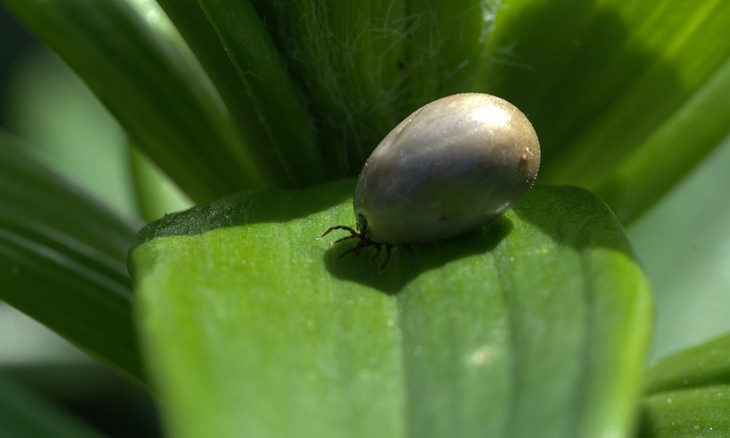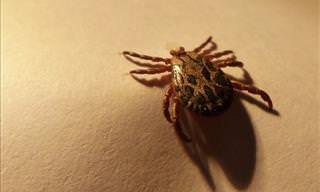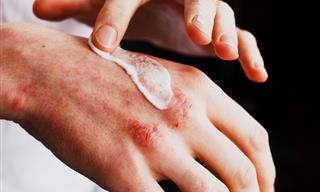1. They munch on mice
In the northeastern United States, ticks are known to love living on white-footed mice. If acorn growth in the fall is weak, ticks will seek out human hosts rather than their beloved mice. These ticks can carry Lyme disease, which can cause chronic fatigue, joint pain, and other health problems.
2. They’re smaller than you might think
Ticks can look deceptively large in pictures, but they’re actually quite difficult to spot in real life, and this is especially true for baby ticks. They start off their lives as eggs, before turning into larvae, nymphs and finally adults. Larvae are the size of a period, nymphs are as big as a poppy seed, and adults are roughly the size of a sesame seed.
3. They have eight legs
Just like spiders do, ticks have eight legs, meaning that they’re arachnids. An arachnid has eight legs, compared to an insect’s six. Ticks are wingless and have a flat, oval-shaped body (unless it’s fat after gorging on blood).
4. They carry more nasties than just Lyme disease
Although Lyme disease gets all the attention when talking about ticks, the little critters actually carry at least 10 different known diseases. These include Rocky Mountain spotted fever, babesiosis, anaplasmosis, and ehrlichiosis. The illnesses that they carry vary from species to species (there are over 800 species of tick extant in the world today), and that’s without mentioning the bacteria and pathogens they carry.
It can be quite tricky to tell if you’ve been bitten if you haven’t noticed a tick on your body, but if you have, you’ll likely experience flu-like symptoms and develop a rash. You should also know that Lyme disease is misdiagnosed very often, and as many as nine out of 10 cases go unreported.
5. You might not necessarily be sick even though you’ve been bitten

There’s no need to panic if you find a tick on your or your pet’s body. This is because not all ticks are infected with Lyme disease, and removing them promptly can vastly reduce the odds of catching it. In fact, most people bitten by ticks don’t get Lyme disease or any other tick-borne illnesses.
6. You need to call the doctor if…
...you start experiencing symptoms such as a bull’s eye rash, which presents in 70 to 80% of Lyme disease cases. Some 90% of Rocky Mountain spotted fever cases are associated with rashes. Even if you’ve been bitten by a tick and don’t develop a rash, watch out for symptoms such as fever, aches, and pains.
7. They love pets as much as humans
If you have cats or dogs, be sure to check them every day to see if they have any ticks on their skin. Dogs can be vaccinated against most of the tick-borne diseases, but with that being said, not all are covered, nor will a vaccination prevent ticks from getting into your home. With regard to cats, it’s wise to talk to a vet about the right protective products to apply to their skin.
8. Watch those ankles of yours
Ticks are most likely to transmit Lyme disease to humans when they’re in the nymph stage of development (late spring and early summer). This is because they’re small and hard to spot, making it difficult for people to remove them before illness sets in. You should watch your ankles because ticks don’t tend to climb very far off the ground.
9. They can get in under your clothes too
The best way to stay tick free is simply to check for them frequently. If you’re hiking outdoors, wear light-colored clothing, keep shirts tucked in, and always wear closed-toe shoes. Keep long hair tied back, especially when gardening, and don’t sit directly on the ground or stone walls. Examine your clothes, gear, and pets thoroughly after spending time outdoors. Don’t forget to check sneaky hiding spots such as your belly button and underarms.
10. They don’t like clean, tidy yards
Landscaping is a great way of keeping ticks at bay. This is because they require a lot of humidity to survive, so they tend to keep away from well-groomed lawns that lack shade. In fact, you’ll likely find ticks near the edge of your lawn. Piles of brush should be cleaned up, weeds should be removed and glass should be mowed regularly to keep ticks at bay.
Content source
 Go to BabaMail
Go to BabaMail


























































